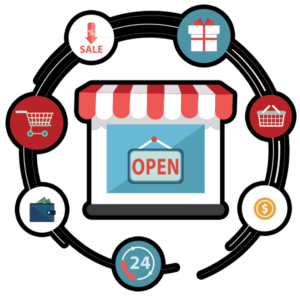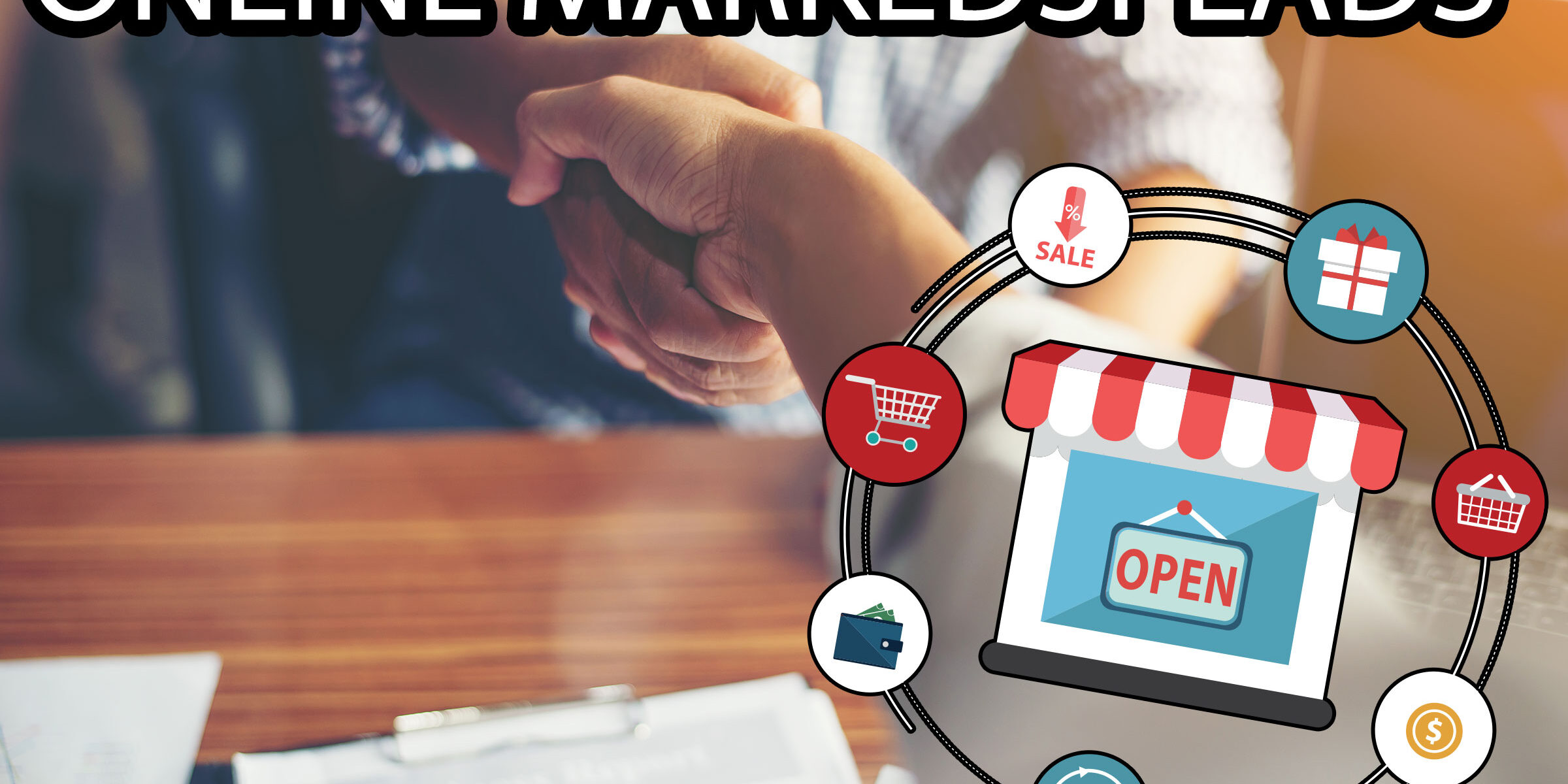Marketplaces Have Always Been a Gathering Place
Throughout most of human history, marketplaces have been the gathering place for all traders who had goods to bring to market. It has been a space where one could easily (for the right price) sell their goods to other traders. It’s a meeting point for like-minded individuals, people looking to purchase or sell items.
I also imagine it has been a place where gossip circulated among traders and their families. In today’s world, we have Facebook and Twitter for gossip, so this need is arguably fully covered 🙂
In Ancient Times, Products Served as Actual Forms of Currency.
 It has almost always come at a cost to use the marketplace area, such as renting a stall or booth space. In the rhetoric of “something for something,” people likely paid for the space with goods. It could be the baker paying with bread or the butcher paying with meat.
It has almost always come at a cost to use the marketplace area, such as renting a stall or booth space. In the rhetoric of “something for something,” people likely paid for the space with goods. It could be the baker paying with bread or the butcher paying with meat.
People exchanged goods among themselves since it wasn’t until the Viking Age and perhaps a bit earlier that there was an actual tariff/tax on goods or sales tax. However, people probably quickly figured out they could avoid it by establishing a new marketplace elsewhere—until the king’s officials discovered it and imposed the tariff again.
In my Childhood, It Was Pleasant!
I am 45 years old today, and I fondly reminisce about the times when I was practically dragged along by my mom and dad. It was mainly at Vildsund Market, where we browsed through animals, clothes, shoes, and everything else imaginable. Those were good times, and one could always count on getting a hot dog or some other treats when going to the market.
People often had items purchased from places like Germany or knock-off versions of certain clothing, which they sold—probably illegally and unlawfully, and certainly off the books. This was in Jutland and even up in Thy—of course, it had to be orange (at least some of the merchandise). But it was so cozy.
I don’t think the real physical marketplaces will ever cease to exist, but the volume of trade on them will likely decrease. Now, the marketplace has gone digital and become far more controlled and… Making ‘black money’ is probably harder now (I think).
In the Present and the Near Future, It's All About Cool Cash, isn't it?
 In the current year of 2018, it’s been well over 10,000 years since the first marketplace was ever created—a gathering place for people. Now, gatherings don’t happen physically anymore—except perhaps around a website where one can check prevailing prices. Unfortunately, bargaining and haggling to drive prices down are no longer possible.
In the current year of 2018, it’s been well over 10,000 years since the first marketplace was ever created—a gathering place for people. Now, gatherings don’t happen physically anymore—except perhaps around a website where one can check prevailing prices. Unfortunately, bargaining and haggling to drive prices down are no longer possible.
Some of these online marketplaces include:
– Miinto, primarily dealing with clothing and fashion items.
– Trendsales, where you can sell clothing, bags, jewelry, etc.
– Wupti Marketplace, where you can buy anything under the sun.
– Of course, Amazon falls into this category as well. Read more in this article about what we do when Amazon arrives in the country.
From 2018 to 2025, online marketplaces will play an increasingly significant role in all online transactions, and probably in all transactions ever made. You can’t deceive, you can’t negotiate prices, and you can be sure of one thing—that you’ll get decent quality instead of some Chinese junk.
Consumer protection laws will still apply, unlike in a physical marketplace. Yes, they apply in the physical market, but what are the chances you’ll ever find the seller again?
I actually believe that it’s an advantage that things have moved online, even when it comes to trading goods.
What is the Advantage of the Online Marketplace?
 There are many good advantages to the market moving online. As mentioned earlier, it’s a bit easier to protect your rights regarding purchases. Additionally, for you as the owner of the online store, there’s much quicker sales and direct orders. It’s like the rules are easier to navigate.
There are many good advantages to the market moving online. As mentioned earlier, it’s a bit easier to protect your rights regarding purchases. Additionally, for you as the owner of the online store, there’s much quicker sales and direct orders. It’s like the rules are easier to navigate.
Some marketplaces (none that I know of in Denmark, as far as I’m aware) also offer ‘warehouse storage’—Amazon, for instance, has this, allowing them to quickly dispatch products to customers. It will likely come to Denmark at some point where goods are produced for warehouses that marketplaces then sell from.
Asos in the UK is also one of the marketplaces that stores customers’ clothing (Asos primarily deals with clothing, similar to Miinto).
Are There Drawbacks to Online Marketplaces?
Other than the scent of hay, rainy weather, and the potential for pickpockets…
Certainly, there are still scammers, but the online marketplaces take care of them. If they receive a report, for instance, that counterfeit goods are being sold, they will undoubtedly intervene and sever ties with that store.
Moreover, engaging in off-the-books transactions is no longer possible, which may be a bit frustrating for many of us Jutlanders.
However, personally, I would argue that there are only advantages for you as an online store owner—you’ll see much more sales by being on the marketplace. Nevertheless, it’s essential to be aware that these sales may come at a cost—see more below.
Your Online Store on the Marketplace
It’s easy to set up your own stall in the marketplace, establish your position, display your flags, and enhance visibility. In fact, all it requires is selecting some of the marketplaces within our console at avecdo.
I’ll try to explain a bit here about how you can join the marketplace and whether it’s worth it. Because it probably goes without saying that you can’t justify purchasing a booth at the marketplace for several thousand kroner if you can only generate a turnover of a few hundred. Additionally, there are several other factors that should probably come into play. For instance, with several marketplaces, there’s a manual operation you need to go through when creating the order in your own order system every time you receive an order on a marketplace.
Many of our customers are looking for live two-way synchronization with orders from the marketplace to the online store, and it’s actually something we’ll be working towards in the future at avecdo.
Is it Even Worth Being a Part of It?
How much do you earn on your product in percentage terms? Is your margin 50% or below?
You should be aware that most marketplaces take a commission for each sale. In essence, this means that you’ll pay a piece of the pie for each sale on the marketplace—similar to affiliate marketing where a commission is earned for generating a sale.
The commission or share you have to pay varies from one marketplace to another, especially the well-known platforms, which take a significant amount (meaning a high percentage) because they can generate many more sales.
If you’re not earning enough on your product, you should consider whether that specific item should be included in the marketplace feed. This is where avecdo can make a difference because you can deselect both categories and subcategories, down to each individual product, determining whether it should be included in the feed for platforms like Wupti or Miinto.
The advantage of joining is that there are many users, and all marketing costs are incurred by the marketplace—not you. However, all brand awareness also accrues to the marketplace, not you as the webshop/seller.
Pros
- You don’t have to market your own shop extensively.
- Some marketplaces also handle product shipping for you (not known in Denmark yet, at least).
- You know precisely what it costs you, and with avecdo, you can choose to send only the products with a high enough margin to make it worthwhile.
- You (partially) avoid customer support and phone calls.
- It’s easier to expand internationally; for example, to Sweden, Norway, Finland, and possibly Germany, by partnering with various marketplaces.
Cons
- You always have to pay a commission on the sale, and at some marketplaces, a monthly membership fee is required to participate.
- The commission can be high.
- Your shop gains less visibility, as the purchase doesn’t happen on your site.
- You may not get the money for the purchase quickly, impacting your liquidity.
What is the Cost of Being On the Online Marketplace?
The cost of entry is often a small percentage of sales, ranging from 5-30%, plus sometimes a monthly fee.
Is it possible to negotiate prices?
I’ve heard that sometimes it’s possible to negotiate the price and commission. However, I think this might be challenging if you have a relatively small webshop or sales potential. An alternative could be to slightly increase the prices of the products and pass on the higher prices to the marketplaces, but whether that’s a good idea can be debated for a long time. And whether it’s even legal according to the rules of the individual marketplaces, I might have some doubts about.
What Marketplaces are There, Really?
In Denmark, we have Miinto, Trendsales, Coolshop Marketplace, and probably several others.
In 2017, Wupti Marketplace was introduced as one of the few marketplaces and has had moderate success, but I am quite sure that they will be a great success. Wupti has a very strong brand in Denmark and is likely to grow – however, there are several other marketplaces that also make sense.
If you have clothing with a relatively high commission and a strong brand, I would recommend both Coolshop, Trendsales, and Miinto.
Determining which of these markets performs best with your specific brand is actually quite difficult to predict. As mentioned earlier, one important thing is to only send details about the products that can actually be sold with a large enough margin for it to be worthwhile for you to sell them on the marketplace.
There’s no reason to include an additional 50+ kroner with each order.
Marketplaces on a Global Scale!
 WOW, there are so many…
WOW, there are so many…
ASOS, Amazon, eBay, Etsy, Bonanza, Rover.com, Fruugo, PriceMinister, Spartoo, DaWanda, Allegro, Cdiscount, La Redoute, fnac, Otto, Pixmania, Walmart, Sears, Wish, Reverb, Wayfair, Jet, and many hundreds more.
There will likely be more in Denmark as well, even though we only have 6 million inhabitants, constituting just under 1/1000th of the world’s population.
REMEMBER, with the right marketplaces, you can easily expand your market internationally.
Amazon is, in Fact, a Marketplace as Well...
By the way, remember that Amazon is also a marketplace; they charge a monthly fee for participation and take 10-15% of the sale each time.
My Final Thoughts
Perhaps it’s time for you to consider whether you want to be suffocated by competitors and marketplaces because you’re not part of the market yourself. Or do you want to join the journey, paying a modest fee to get on the individual marketplaces?
Here’s what it will cost you to join:
- “Marketplace” Channel with avecdo
- Monthly fee to the marketplace
- Commission on each sale
Furthermore, remember that once avecdo has your product data in the system, it’s always easy to add more channels—often with just a few clicks. However, each marketplace also needs to make a little money on each sale generated through their platform.
Are you ready to get started? Here are the link to get started with avecdo






